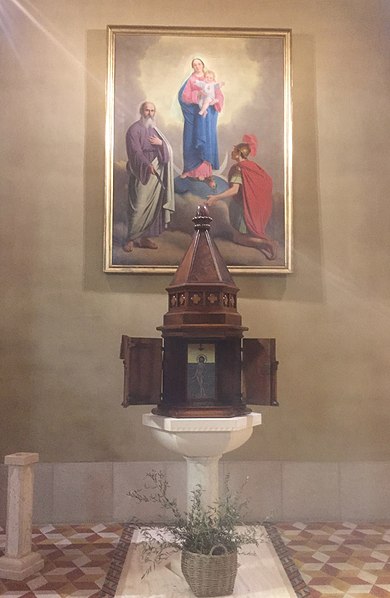San Bartolomeo


Facts and practical information
Nestled within the serene landscape of Italy, San Bartolomeo is a site that commands reverence and awe, not solely for its religious significance but also for its architectural splendor. This church, dedicated to Saint Bartholomew, is an embodiment of the rich cultural and spiritual heritage that permeates the Italian countryside.
San Bartolomeo is an exemplar of ecclesiastical architecture, with origins that trace back to the medieval period. Its structure is an amalgamation of various styles that have evolved over the centuries, bearing witness to the historical changes and artistic movements that have swept through Italy. The church is adorned with intricate frescoes and sculptures that are a testament to the craftsmanship of bygone eras.
As a place of worship, San Bartolomeo serves as a focal point for the local community, offering a sanctuary of peace and contemplation. The church's interior is a harmonious blend of solemnity and beauty, with stained glass windows filtering light in a kaleidoscope of colors, casting a divine glow on the sacred art and the faithful congregants.
The church's facade is equally impressive, featuring classic elements that are characteristic of Italian religious edifices. Its bell tower, often a distinctive feature in the skyline, serves as a beacon of faith, calling the devout to prayer and reflection.
San Bartolomeo is not only a destination for the religiously inclined but also for those who appreciate the convergence of art, history, and spirituality. It stands as a silent observer of the passage of time, offering a window into the past and a space for future generations to explore the depths of Italy's ecclesiastical traditions.
San Bartolomeo – popular in the area (distance from the attraction)
Nearby attractions include: San Michele Bridge, Villa Castelbarco, Teatro Donizetti, Basilica di Santa Giulia.











